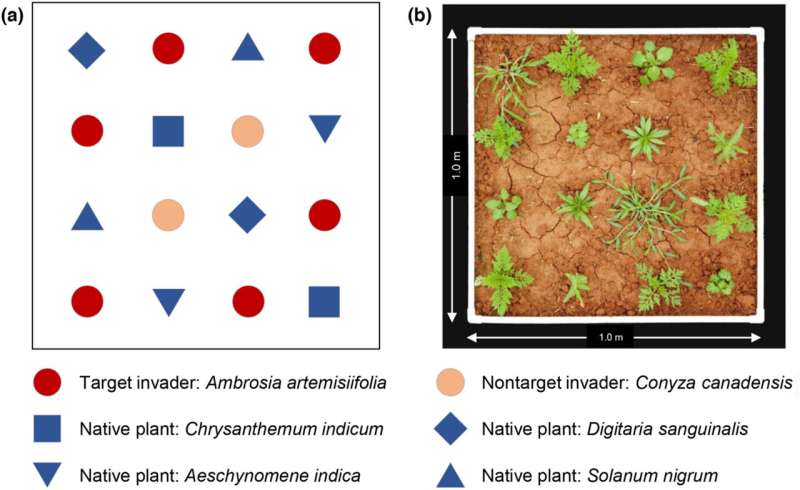This article has been reviewed according to Science X's editorial process and policies. Editors have highlighted the following attributes while ensuring the content's credibility:
fact-checked
peer-reviewed publication
trusted source
proofread
Researchers reveal dynamics and potential mechanisms of secondary invasion after control of invasive plant

Secondary invasion refers to the proliferation of non-target invaders following efforts to suppress or control dominant target invaders. It is common in invasive plant management in ecosystems that harbor multiple non-native species. To date, secondary invasion has become a serious obstacle to ecosystem recovery. However, little is known about the dynamics and potential mechanisms of secondary invasion.
Researchers from the Wuhan Botanical Garden of the Chinese Academy of Sciences have evaluated the secondary invasion and the invasiveness of 14 non-target invaders after control of dominant target invader Ambrosia artemisiifolia by biocontrol agent Ophraella communa in two consecutive years.
Their study was published in New Phytologist on March 14.
The results showed that secondary invasion occurred for all tested non-target invaders, but their abilities to invade (secondary invasiveness) differed among non-target invaders and varied with time since management.
The researchers found that important drivers of secondary invasiveness were phylogenetic relatedness between the target invader that was managed by biocontrol and the non-target invaders, as well as the non-target invaders' functional traits with competitive advantages. However, the importance of these two drivers also varied with time since management.
This study is the first to apply the theories of phylogenetic relatedness and functional traits to investigate secondary invasiveness following management of the dominant invader. It provides valuable insights to predict and manage secondary invasions to restore native communities more effectively.
More information: Changchao Shen et al, Dynamics and mechanisms of secondary invasion following biological control of an invasive plant, New Phytologist (2023). DOI: 10.1111/nph.18878
Journal information: New Phytologist
Provided by Chinese Academy of Sciences

















